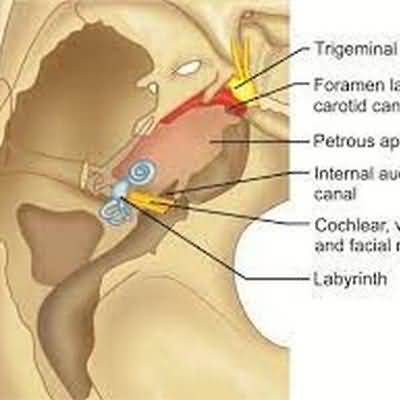cholesteatoma
cholesteatoma
is a special variety of chronic otitis media
The most common cause is prolonged eustachian tube dysfunction, with inward migration of the upper flaccid portion of the tympanic membrane
This creates a squamous epithelium-lined sac, which—when its neck becomes obstructed—may fill with desquamated keratin and become chronically infected
Cholesteatomas typically erode bone, with early penetration of the mastoid and destruction of the ossicular chain
Over time they may erode into the inner ear, involve the facial nerve, and on rare occasions spread intracranially
Otoscopic examination may reveal an epitympanic retraction pocket or a marginal tympanic membrane perforation that exudes keratin debris, or granulation tissue
The treatment of cholesteatoma is surgical marsupialization of the sac or its complete removal
This may require the creation of a “mastoid bowl” in which the ear canal and mastoid are joined into a large common cavity that must be periodically cleaned


















